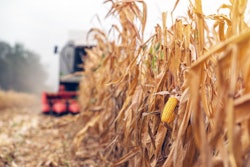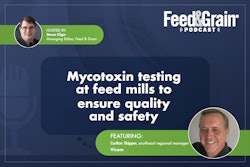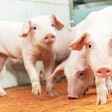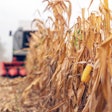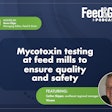
Corn and other ingredients purchased in the past year could be subject to high levels of mycotoxin contamination, experts from DSM-Firmenich warned during webinar on February 14.
So far, 76% of 2023 corn samples from the U.S. have tested positive for fumonisin, falling just short of the record 78% seen in 2018, according to data from DSM-Firmenich. Globally, 86% of finished feed samples tested in 2023 were positive for fumonisin, nearly matching the 87% peak recorded in 2018 and matching high rates of contamination observed around the world since 2017.
Fumonisin is the most common mycotoxin found in U.S. corn, but far from the only mycotoxin present in this past year's crop, said Paige Gott, DSM-Firmenich's mycotoxin risk manager for North America. Nearly three-fourths of samples tested were positive for more than one mycotoxin, Gott said.
Gott also noted that 100% of dried distillers grains with solubles (DDGS) samples tested in 2023 came back positive for mycotoxins.
“It's important to keep in mind that DDGS is a potential source of contamination, and important to be aware of the risk if this ingredient is included in [animal] diets,” Gott said.
Although mycotoxins are not as common in soybeans, Gott said about one-third of samples tested positive.
And many of these mycotoxins appear to have made their way to finished feed. Ignacio Artavia, marketing manager for ruminants at DSM-Firmenich, said 60% of finished feed samples tested positive for more than one mycotoxin in 2023, with 26% of samples containing aflatoxin. Aflatoxin is a particularly toxic mycotoxin that can contaminate milk and dairy products.
Although a 26% prevalence may sound low, Artavia said the total concentration of aflatoxin detected in 2023 was worrying because it could exceed screening levels for every country in the world that has established limits on aflatoxin in animal feed.
Outside concerns about their overall prevalence, mycotoxins are also a growing concern in the aquaculture industry, according to Benedict Standen, head of marketing for aquaculture at DSM-Firmenich. Increasing pressure to reduce fishmeal inclusion levels has led to an increased reliance on plant-based ingredients, which has introduced mycotoxins into aquafeed, Standen said. He estimated that mycotoxins cost the aquaculture industry some US$5 billion per year.


